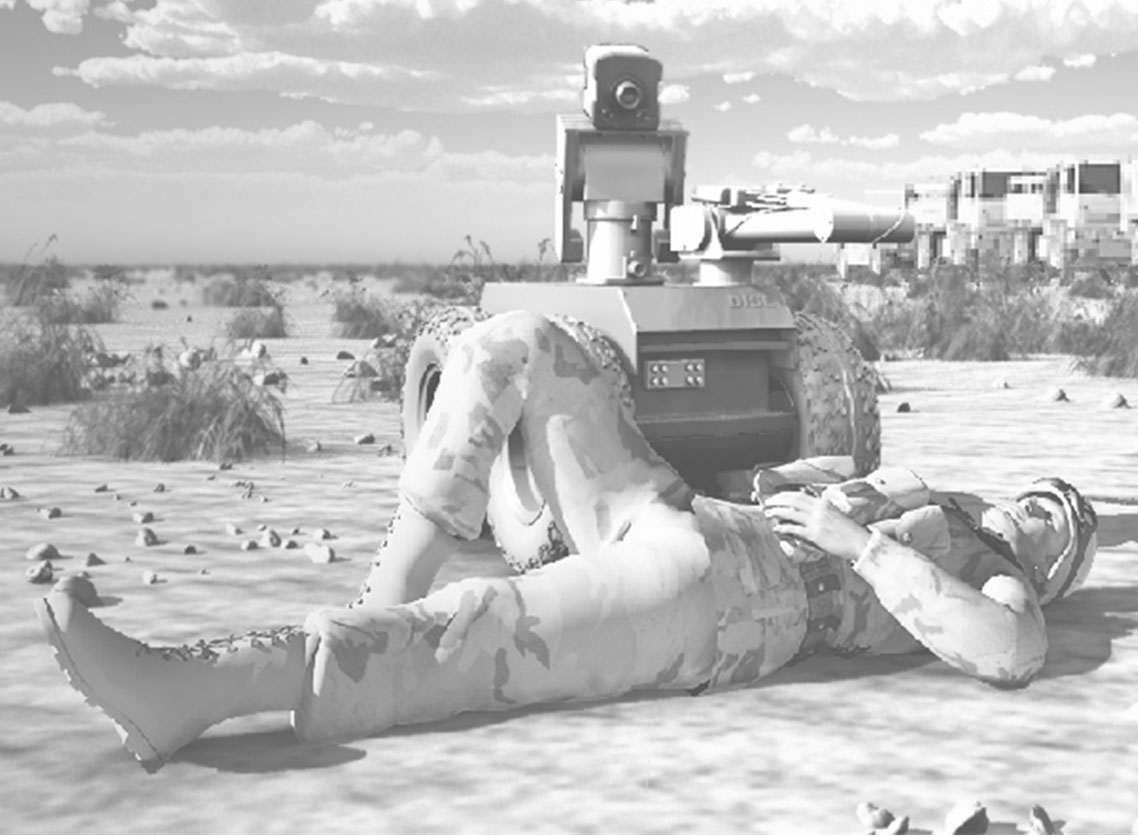Stand-off Remote Triage Sensor Array for Robotic Casualty Extraction Systems

The death rate for medics is substantially higher than that of regular infantry. A solution was needed to ensure medics were able to assess an injured Soldier without leaving cover.
A robotic system that could enable the medic to determine the status of an injured Soldier remotely could save many lives. This includes not only the medic, but the Soldier whose spinal injury would require special transport techniques, or who has life-threatening injuries that must be treated immediately to prevent death on the battlefield.
Scientists at PERL Research in Alabama are developing just such a system. They most recently displayed their technology at November's Army Science Conference.
PERL Research senior scientist Paul Cox says, "We are developing a revolutionary technology to assess an injured Soldier remotely without having to actually touch him or her. This sensing technology will be integrated onto a robot, thereby allowing the medic to stay behind cover in situations when the area is not secured or there are possibly explosive devices. There are currently no other technologies that can perform this type of remote, noncontact patient assessment."
PERL has been working with the U.S. Army Medical Research and Materiel Command's Telemedicine and Advanced Technology Research Center for three years on robotic stand-off thermal imaging sensors for vital signs and hemorrhage. Dr. Sylvain Cardin manages the project for TATRC.
The automated remote triage system integrates intelligent software and sensors to assist in a medic's remote assessment.
The system uses a thermographic (temperature sensing) camera to accurately measure the person's heart rate, respiration rate and skin temperature. Also included are a spinal injury sensor and a handheld triage computer that can determine injury severity based on the person's vital signs. The system integrates the medic's assessment of the situation (via video monitoring and two-way audio interaction) with the automated processing of the sensor data to determine the status of the injured Soldier.
According to Cox, the system could be used in the field in less than two years for standard triage procedures such as breathing, circulation, exposure and injury severity score. He adds, "More research is needed for more detailed patient assessment such as detecting internal hemorrhaging."
Internal bleeding is the leading cause of death on the battlefield and is very difficult to detect, especially in the early stages. PERL has completed initial testing with Dr. William Cooke of the University of Texas at San Antonio to begin correlating data from its thermographic camera with stroke volume, the amount of blood being pumped with each heartbeat. Stroke volume is a strong indicator of hemorrhaging but is not practical to measure in the field using current devices.
Cooke simulates battlefield blood loss in a laboratory setting by incorporating a negative pressure chamber, similar to that used to study astronauts, which tricks the heart and brain into thinking the body is bleeding.
He notes, "Our preliminary laboratory results are very exciting. Regardless of whether the simulated hemorrhage is slow, moderate or fast, analysis of thermographic images of the forehead demonstrates tight correlations with stroke volume. For field applications, we envision the capability to gauge magnitudes of blood loss experienced by wounded Soldiers, to assist with decision support and triage prioritization."
To learn more about TATRC's medical robotics program, visit www.tatrc.org/ports_robotics.html.














